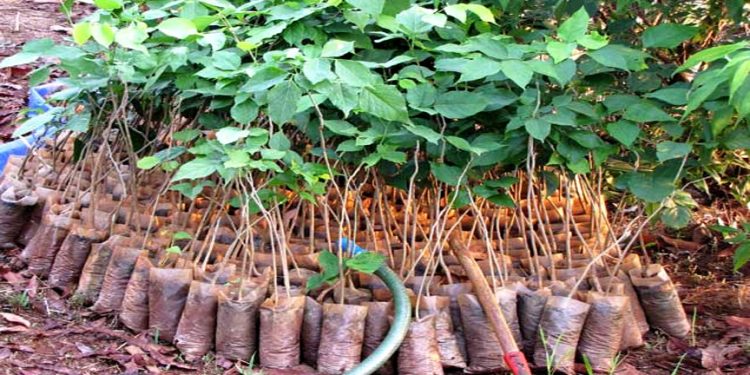Angul: Every year lakhs of saplings are planted on thousands of hectares in Angul district. The Forest department has been undertaking the plantation drive for a long time now.
If the department has been planting saplings year after year, it stands to reason that there would have been dense forest in the district. But that is not the case.
Let alone a dense forest, the district’s green cover is decreasing slowly but steadily. The Forest department is planting saplings every year only because there is a directive from the government in this regard.
However, if the present forest cover in the district is any indication, the exercise has been futile so far.
Local environmentalists, green lovers and intelligentsia allege that the Forest department is not taking proper care of planted saplings and this is the reason why most saplings are destined to wither and die within few days of plantation.
Expressing his concern over the manner in which the afforestation drive is being undertaken in the district, environmentalist Swapna Sarangi said that in this mineral-rich district trees are being felled mindlessly for mining activities.
They should be compensated by planting saplings. But it is not the practice here. If the number of saplings planted every year is taken into consideration, there would have been dense forest across the district. But the ground reality is different.
“This is because the forest department is not maintaining the planted saplings properly. Its time all of us should think seriously and take action to make up the loss,” she observed.
Echoing Sarangi’s views, Ashok Satpathy, an environmentalist, said that the trees planted by spending lakhs of rupees under the Compensatory Afforestation and Management and Planning (CAMPA) are not being taken care of properly.
He alleged the avenue plantation is of no help in increasing the green coverage. “The total forest cover in the district will increase only when the natural forests are saved from being sacrificed at the altar of development,” he opined.
According to information shared by the Angul Forest Division office, afforestation was undertaken in the district on 367.53 hectares in 2017-18 fiscal under eight different yojanas.
Of them, saplings were planted on 32 hectares of open space and 335.530 hectares in forest areas to increase the density of the greenery.
Similarly, saplings were planted along the sides of an eight-kilometre-long road. The Forest department also planted 1,33,596 saplings, and sold and distributed 33,000 saplings.
Similarly, to increase greenery and forest density, saplings were planted on 51.682 hectares and 1701.25 hectares of forest land respectively in 2018-19.
Sapling plantation was carried out along the sides of a 37-kilometre-long road. The Forest department had planted and distributed 4,46,851 and 3,00,430 saplings respectively.
In 2019-20, the department had planted 4,32,458 saplings. It had sold and distributed 8,66,490 saplings. Then, plantation was undertaken on 71.23 hectares of open space and 1686.2 hectares to increase forest density.
The department had carried out plantation in 95 hectares of open space and 1120 hectares of forest land in the year 2020-21. This apart, saplings were planted along the sides of roads measuring 68 kilometres.
While the Forest department planted 4,32,160 saplings, it had sold and distributed 15,28,000 saplings. This year, a total of 12,09,914 saplings have been grown.
Of them, 4,49,914 saplings are kept aside for afforestation purpose, the remaining 7,60,000 saplings are to be sold and distributed. The department is yet to inform what number of saplings has been set aside for avenue plantation.
When contacted, Angul, DFO, Prasanna Kumar Behera admitted that the district is losing its green cover to mines and industries. So it is not the responsibility of the Forest department alone to plant trees.
Industrial houses, mine owners and even common people should come forward to plant trees to increase the district’s green cover. And this will go a long way in bringing down the pollution level in the district.
PNN






































